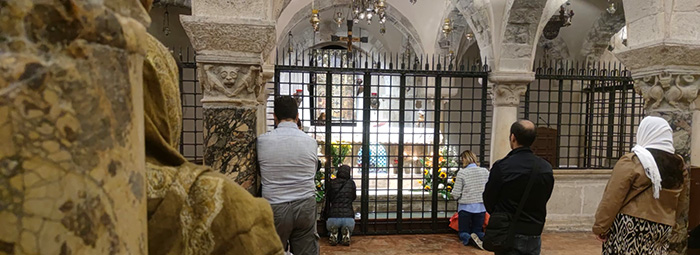
Nestled along the Adriatic coast in Bari, Italy, the Basilica of Saint Nicholas is one of the most celebrated religious sites in Europe, blending ancient history with enduring spiritual significance. Known as the final resting place of Saint Nicholas of Myra—a saint revered in both Eastern Orthodox and Catholic traditions—the basilica has attracted pilgrims from across the world for nearly a millennium. Its origins, architecture, and the annual pilgrimage tradition associated with the saint’s feast day create a fascinating story of devotion and intercultural significance.
The Origins of the Basilica of Saint Nicholas in Bari
The Basilica of Saint Nicholas was constructed in the late 11th century, with its foundation dating back to 1087, during a politically complex period for Italy. The region of Bari was then part of the Byzantine Empire, but Italian merchants who saw themselves as agents of Christianity had a growing influence in the area. According to tradition, a group of these merchants, aware of the political instability in Myra (now Demre, Turkey), where Saint Nicholas had been laid to rest in the 4th century, set out on an ambitious mission to relocate his remains to Bari. With the blessings of the church, these traders journeyed to Myra, exhumed the saint's relics, and transported them to Italy. The move wasn’t purely religious; securing Nicholas’s relics in Bari brought prestige and potential economic advantages to the region.
Upon the arrival of the relics in Bari, construction of the basilica began swiftly, and within a few years, a sacred site that honored Saint Nicholas emerged. Completed around 1100, the basilica soon became a hub for Christian pilgrims, particularly those from Eastern Europe, where Nicholas was venerated as a powerful protector. The basilica’s establishment also spurred the growth of Bari as a religious and cultural center, as well as a key point on pilgrimage routes linking the East and West.
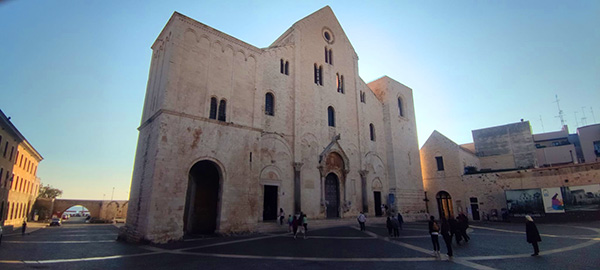
Architectural Significance
The Basilica of Saint Nicholas is a splendid example of Romanesque architecture, a style noted for its heavy, solid construction, rounded arches, and an austere exterior that conveys both strength and simplicity. Its layout includes a central nave flanked by two aisles, large stone columns, and a crypt where the relics of Saint Nicholas are enshrined.
The basilica’s interior, however, provides a contrast to the plain exterior. It features intricate frescoes, including Byzantine-style artwork that reflects Nicholas’s origin from the East and celebrates the blending of cultural influences at this pilgrimage site. The altar is adorned with images of Christ and the saints, while the crypt—a key attraction for pilgrims—is designed with columns and arches that lead visitors to the relics.
The crypt’s ambiance is particularly significant. Descending into this space is meant to evoke a journey into sanctity as pilgrims come close to the relics and seek blessings. The crypt's solemnity is a powerful part of the pilgrimage experience, which has endured for hundreds of years.
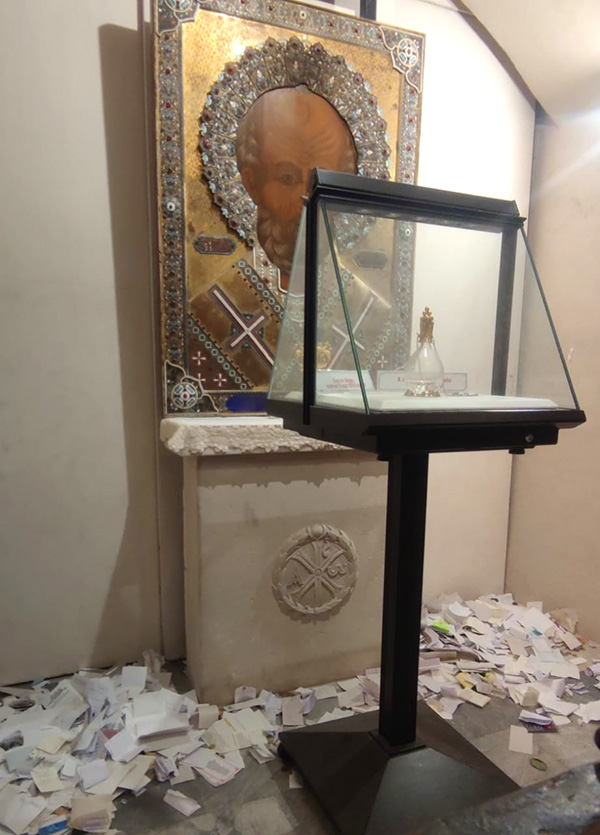
The Pilgrimage Tradition
Saint Nicholas is celebrated around the world, but in Bari, his feast day on May 9 holds particular importance. Each year, thousands of pilgrims, including many from Eastern Orthodox countries such as Russia, Greece, and Serbia, travel to the basilica to honor the saint. This annual pilgrimage has roots that date back to the 12th century when, despite the schism between the Eastern Orthodox and Roman Catholic churches, both sides continued to revere Nicholas as a shared figure of sanctity.
The celebrations begin with a procession carrying an icon of Saint Nicholas from the basilica to the Adriatic Sea. There, it is blessed in a ritual meant to recall Nicholas’s legendary acts of saving sailors and others who traversed the seas. After the sea blessing, the icon is returned to the basilica, where a Mass is celebrated, followed by prayers, songs, and offerings from the faithful. This ritual reinforces the communal ties between Bari and Eastern Europe, uniting pilgrims in their devotion to Nicholas and their gratitude for his intercessions.
On this day, a vial containing liquid that exudes from the relics—known as “manna of Saint Nicholas” or “Santa Manna”—is collected and distributed to the faithful. This phenomenon is attributed to Nicholas’s ongoing spiritual presence and adds a unique mysticism to the pilgrimage experience. Believers claim that the manna has miraculous powers of healing and protection, enhancing the sense of awe and reverence at the basilica.
Saint Nicholas, a 4th-century bishop renowned for his generosity and compassion, eventually became the inspiration for the modern figure of Santa Claus. Known for his charitable acts, such as secretly giving dowries to impoverished families to prevent daughters from being sold into servitude, Saint Nicholas developed a reputation as a protector of children, sailors, and the poor. This legacy of kindness spread across Europe, and his feast day on December 6 became a time for gift-giving and celebrations, especially in countries like the Netherlands, where "Sinterklaas" traditions flourished. Dutch immigrants brought these customs to America, where the image of Saint Nicholas evolved into "Santa Claus," merging with folklore and adopting a jolly, gift-bearing persona closely associated with Christmas. Today, while Santa Claus is widely seen as a secular holiday figure, he retains traces of Saint Nicholas’s spirit of generosity and care for children and those in need.
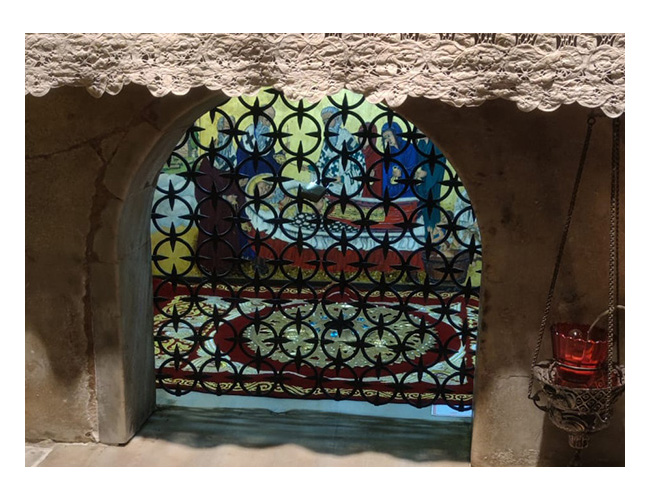
A Symbol of Unity and Cultural Exchange
The Basilica of Saint Nicholas remains a vital meeting point for Catholics, Orthodox Christians, and tourists who wish to honor the saint’s legacy and explore the beauty of this medieval church. It is unique in that it is a space where both Eastern and Western Christianity intersect, providing a rare example of ecumenical harmony.
Over the centuries, the basilica has also attracted popes, patriarchs, and other religious figures who view it as a symbol of Christian unity. In 1987, Pope John Paul II celebrated Mass in the Basilica and highlighted the importance of Saint Nicholas as a bridge between faiths. More recently, the site hosted an ecumenical prayer with Pope Francis and Eastern patriarchs in 2018, reinforcing its status as a location dedicated to dialogue and peace.
A Timeless Sanctuary
For nearly a thousand years, the Basilica of Saint Nicholas has provided solace to the faithful and inspiration to those seeking a deeper connection to history, spirituality, and humanity. It stands as a testament to Bari’s cultural and religious significance, blending the relics of a 4th-century saint with the rich architectural legacy of medieval Italy. As pilgrims continue to visit this remarkable site, the basilica fulfills its ancient role as a sanctuary for the faithful and a destination for those drawn by the universal appeal of Saint Nicholas.
Whether it is the architecture, the relics, or the saint’s enduring presence that draws people to Bari, the Basilica of Saint Nicholas remains a profound symbol of faith, history, and cultural unity. In an increasingly divided world, this place of pilgrimage continues to inspire hope, connection, and reverence across cultures and generations.
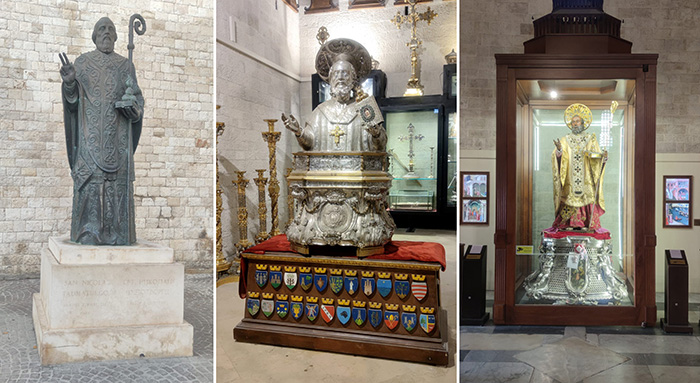





 Поменять язык на русский
Поменять язык на русский 